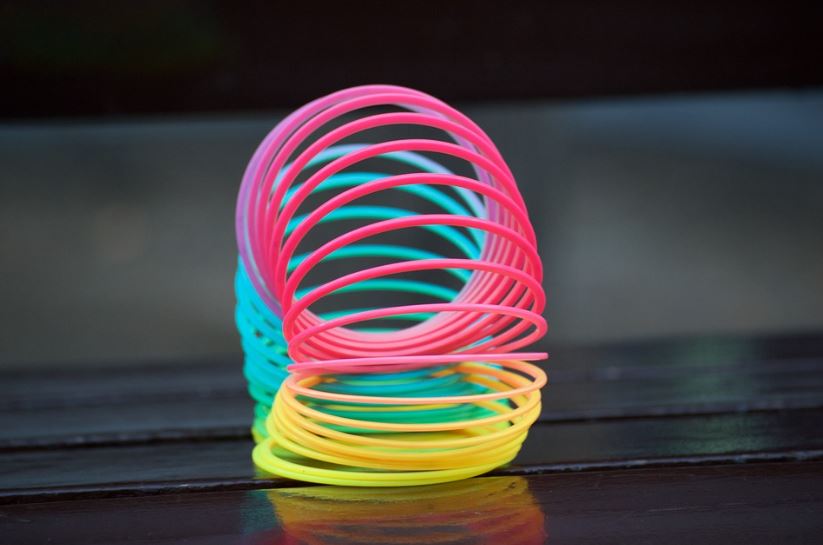Throughout the past two centuries, humans have exhausted their knowledge, skills, imagination, creativity, and experience to bring countless inventions to the world. In recent decades, many of these creations were required to be technical and sensible to become incredibly successful to bake money for their rightful inventors and investors. Yet, that wasn’t the case for the others as some of the “big things” that raked millions actually came from the simplest ideas. Wondering why? Let’s take a look at some of the simple inventions that made millions and know the reasons why the most basic ideas are often surprisingly the best.
1. Post-it Notes
Reason: It’s inexpensive and offers a wide range of uses.
Post-it Notes was first launched in 1977 as “Press ‘n Peel” but failed to penetrate the market. After a series of product testing, it was reintroduced under its new name in 1980, and since then, the simple three-inch multicolored sticky square paper has sold billions. Thus, making it one of the simplest yet most profitable inventions of all time.
What fueled its success? Well, though it was marketed as an office supply, it boasts a remarkably wide range of uses like serving as bookmarks, file labels, or cord organizers, for jotting down notes, for imparting reminders, to acting as emergency tapes. Adding it’s low-cost, it’s no surprise that it quickly found its place as a household staple.
2. Smiley
Reason: It’s a lasting symbol.
The iconic yellow smiley was a brainchild of Harvey Ball, a graphic designer approached by State Mutual Life Assurance Company (now known as Hanover Insurance) in 1963 to devise something that would boost the low morale of its employees, who were then unhappy with their merger with Guarantee Mutual Company of Ohio. In just 10 minutes, he created a simple yet very uplifting smiley face and was paid $45 for the work. Soon, the image became incredibly popular.
In the 1970s, brothers Murray and Bernard Spain came across the smiley, revised it, and trademarked it, an action that Harvey Ball nor State Mutual Life Assurance Company didn’t take. The Spain brothers immediately used the smiley along with the slogan “Have A Happy Day” in buttons and countless other novelty items, getting them a $50 million dollar net worth in just a year and a half. Today, the smiley is selling over $400 million annually from licenses.
What made simple graphic design reap millions? It’s a lasting symbol, that while it has gone through a winding journey and has been associated with lots of meaning, will surely remain a part of popular history and culture.
3. Velcro
Reason: It makes life easier.
Velcro gained massive popularity in the early 1960s after NASA used it to prevent objects from floating in space. Yet, Velcro was never the government agency’s invention but rather by Swiss engineer Georges de Mestral.
In 1941, De Mestral was walking his dog in the woods and upon returning home, his attention was drawn to the burdock plant burrs which were very difficult to remove from his pet’s fur. An inquisitive man by nature, he used a microscope to study burrs. His discoveries led to his invention of Velcro in 1948 and patented it in 1955.
Today, the hook-and-loop fastening system continues to sell millions across the world. Why not? Its invention simply made life easier. You can find it nearly everywhere from clothing to footwear, medical setting, camping equipment, toys, military applications, and a whole lot more. It’s just hard to imagine life without this simple yet versatile fastener.
4. Bendy Straw
Reason: It solves simple problems.
Some of the simplest inventions were devised to solve simple problems. An example of that is the bendy straw invented by Joseph B. Friedman. While at a parlor in the 1930s, he noticed that his daughter had a difficult time drinking from the straight straw, preventing her from fully enjoying her milkshake.
He knew he couldn’t change the height of the counter and lower it down for his daughter to reach the beverage nor could he make his daughter taller to fix the situation. Driven by curiosity, he took the straw home instead to see what he could do. First, he inserted a screw into the straw’s top and then wrapped dental floss. The result was the signature corrugations that allowed the straw to bend without blocking the flow of the liquid.
In 1939, he founded the Flex-Straw Company but took some time to have the necessary machinery that would produce the product on a larger scale. He made his first sales to a hospital catering to patients struggling with standard straw, not knowing that having a solution for a simple problem would later on evolve into a multi-million dollar business. Some creations were quietly invented but have brought their own little positive impact to the world.
5. Random Quirky Inventions
Reason: They’re entertaining and weird.
Other inventions didn’t need to be symbolic, be useful enough, solve problems, or improve our way of living to earn millions. All they had to be was to become downright ridiculous and amusing to capture people’s hearts.
One good example is the Slinky toy invented by Richard James by pure coincidence. A naval engineer known to be clumsy, he got the idea for the toy after dropping the tension springs he was working with and noticed how it bounced on the floor. His first production of 400 toys in 1945 got sold out in store in just ninety minutes. In the first two years, James sold over a whopping 100 million Slinkys, which was then priced at a dollar a piece.
Another notable invention was the slap bracelet. While it may now be buried in the past, it sold millions during its heyday in the 1990s. High school teacher Stuart Anders invented it in 1983 and hit the jackpot after it became a popular teen fashion statement. Meanwhile, there are also fidget spinners, silly putty, plastic wishbones, pet rock, and the hula hoop that all proved that quirky simplistic inventions had the potential to go big with some sprinkle of luck and the right timing.
So, what are you waiting for? Look around and use your ingenuity. Who knows? You might be the next inventor to be millions richer from a simple invention.






